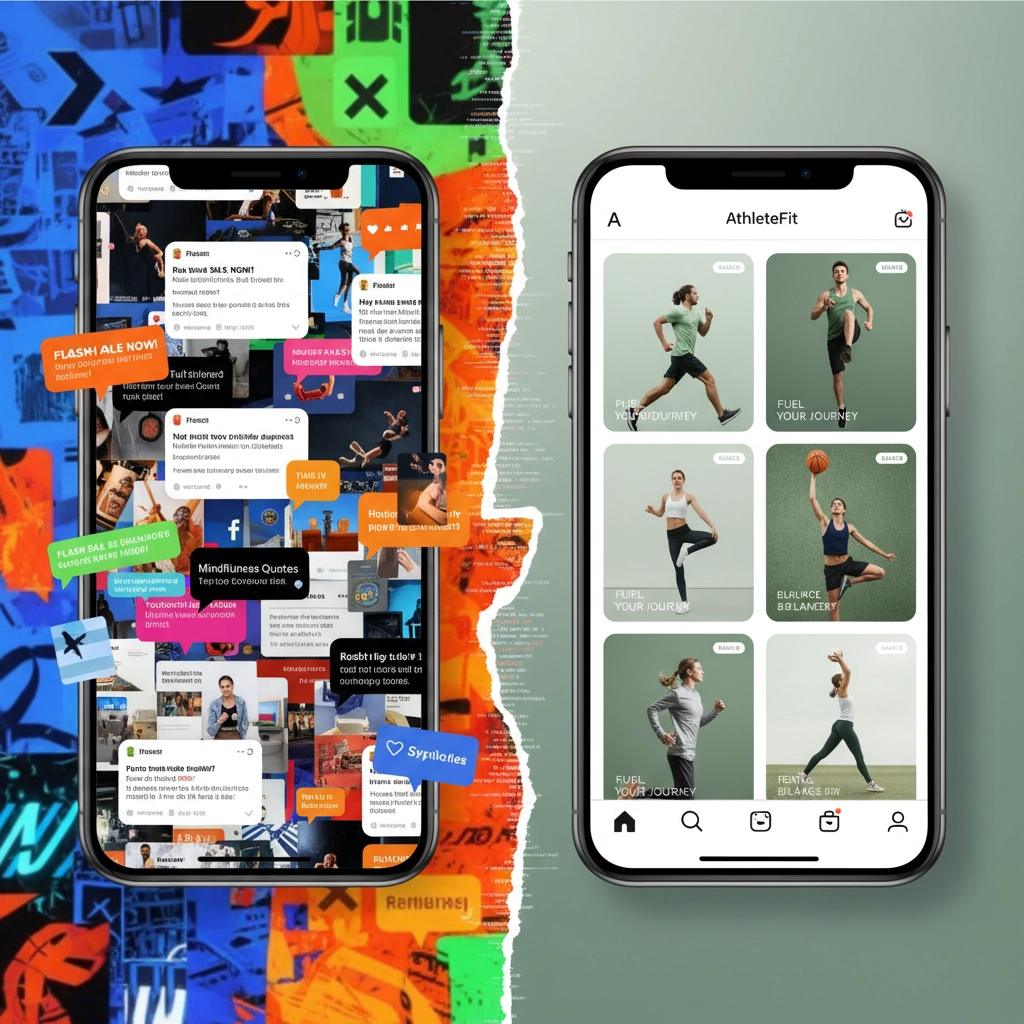Sports brands invest millions in traditional marketing, yet many struggle with basic social media fundamentals. Meanwhile, female athletes are quietly mastering the art of authentic engagement, building devoted followings, and creating lasting brand value with minimal budgets.
The contrast is striking. Major sports brands often rely on outdated playbooks while female athletes pioneer innovative approaches that generate genuine connections with fans. Understanding these differences reveals critical lessons for any sports organization looking to improve their social media performance.
Mistake #1: Inconsistent Brand Voice and Messaging
Sports brands frequently struggle with maintaining consistent messaging across platforms. One day they post motivational content, the next day they share behind-the-scenes footage, followed by product announcements: all without a cohesive brand voice tying everything together.
Female athletes demonstrate superior consistency. Athletes like Angel Reese maintain clear brand narratives whether focusing on athletic performance or personal interests. With 1.5 million Instagram followers, Reese successfully balances self-empowerment content with athletic achievements, creating a recognizable voice that fans can rely on.
The Fix: Develop a brand voice guide that defines your tone, messaging pillars, and content themes. Every post should reflect these core elements, creating predictable value for your audience.

Mistake #2: Reactive Instead of Strategic Content Planning
Many sports brands operate in reactive mode, posting content based on trending topics or last-minute ideas rather than following strategic content calendars. This approach results in inconsistent posting schedules and missed opportunities to build momentum around key campaigns.
Top female athletes approach content strategically. They plan content around competition schedules, training cycles, and personal milestones. This forward-thinking approach ensures consistent engagement and allows them to maximize impact during high-visibility periods.
The Fix: Create 30-day content calendars that align with your marketing objectives, seasonal trends, and key dates in your sport. Plan content themes in advance while leaving flexibility for timely responses to breaking news.
Mistake #3: Over-Promotional Content Mix
Sports brands often treat social media as advertising space, filling feeds with product promotions, sponsor mentions, and sales pitches. This approach generates low engagement because audiences expect value beyond constant selling.
Female athletes excel at balancing promotional content with value-driven posts. Successful athletes follow the 80/20 rule: 80% valuable, entertaining, or educational content mixed with 20% promotional material. This approach builds trust and makes promotional posts more effective when they appear.
The Fix: Audit your content mix and ensure promotional posts represent less than 25% of your total output. Focus on educational content, behind-the-scenes stories, and fan-generated content to create genuine value.
Mistake #4: Ignoring Platform-Specific Best Practices
Many sports brands use identical content across all platforms without considering each platform's unique culture and optimal formats. A lengthy caption that works on Facebook may not perform well on Twitter, while vertical video optimized for TikTok may look awkward on YouTube.
Female athletes understand platform nuances. They adapt content formats, adjust messaging length, and modify hashtag strategies based on each platform's audience expectations and algorithm preferences.
The Fix: Research each platform's content formats, optimal posting times, and engagement patterns. Create platform-specific content variations rather than copying identical posts across channels.

Mistake #5: Failing to Engage Authentically with Fans
Sports brands often treat social media as one-way communication, broadcasting messages without meaningful fan interaction. They may respond to customer service issues but rarely engage in genuine conversations about shared interests or experiences.
Female athletes prioritize authentic fan engagement. They respond to comments personally, share fan-generated content, and create conversations around topics beyond their sport. This approach builds loyal communities rather than passive followers.
The Fix: Dedicate time daily to respond to comments, engage with fan content, and participate in relevant conversations. Set engagement response time goals and train team members to interact authentically rather than using generic responses.
Mistake #6: Neglecting Visual Consistency and Quality
Many sports brands post visually inconsistent content with varying image quality, color schemes, and design elements. This inconsistency makes their profiles appear unprofessional and reduces brand recognition across posts.
Successful female athletes maintain strong visual consistency through cohesive color palettes, similar image styles, and recognizable design elements. Caitlin Clark's Instagram maintains focus on athletic imagery with consistent quality and composition, creating immediate brand recognition.
The Fix: Develop visual brand guidelines including preferred color palettes, image filters, typography, and layout styles. Use design templates to maintain consistency while allowing creative flexibility within established parameters.
Mistake #7: Missing Real-Time Engagement Opportunities
Sports brands frequently miss opportunities to engage during live events, trending conversations, or viral moments. While audiences are actively discussing relevant topics, brands remain silent or post delayed responses that feel disconnected from current conversations.
Female athletes excel at real-time engagement. They join conversations as they happen, share immediate reactions to game results, and participate in trending topics when relevant to their brand. This approach demonstrates authenticity and keeps them connected to current fan interests.
The Fix: Monitor trending topics and live events relevant to your sport. Prepare rapid-response protocols that allow quick content creation while maintaining brand standards. Assign team members to monitor social conversations during key events.

Learning From Female Athletes: Key Strategies
Female athletes demonstrate several advanced strategies that sports brands can adopt:
Authentic Storytelling: They share personal struggles, training challenges, and achievement journeys that create emotional connections with fans.
Community Building: Rather than broadcasting to followers, they build communities by encouraging fan interaction and creating shared experiences.
Content Diversification: Successful female athletes balance athletic content with personal interests, showing multiple facets of their personalities while maintaining brand consistency.
Strategic Vulnerability: They share appropriate personal challenges and growth moments that humanize their brand without compromising professionalism.
Implementing These Lessons
Sports brands can implement these strategies through specific actions:
Conduct monthly social media audits to identify consistency gaps and engagement opportunities. Review successful female athletes in your sport to understand effective content strategies and audience engagement techniques.
Create content pillars that balance promotional material with educational, entertaining, and behind-the-scenes content. Develop response protocols for different types of fan interactions, ensuring authentic engagement while maintaining professional standards.
Establish visual brand guidelines that create immediate recognition while allowing creative flexibility. Train team members on platform-specific best practices and real-time engagement strategies.
Measuring Success
Track engagement rates, follower growth quality, and brand sentiment to measure improvement. Focus on meaningful metrics like comments, shares, and direct messages rather than vanity metrics like total follower count.
Monitor competitor performance and industry benchmarks to understand relative success. Use social listening tools to track brand mentions and audience conversations about your organization.
Moving Forward
Sports brands that learn from female athletes' social media mastery can build stronger fan relationships, increase engagement, and create lasting brand value. The key lies in shifting from broadcast-style communication to authentic, strategic engagement that prioritizes fan value over promotional messaging.
Success requires consistent implementation of these strategies rather than sporadic improvements. Organizations that commit to authentic engagement, strategic planning, and platform-specific optimization will see measurable improvements in their social media performance and overall brand strength.
